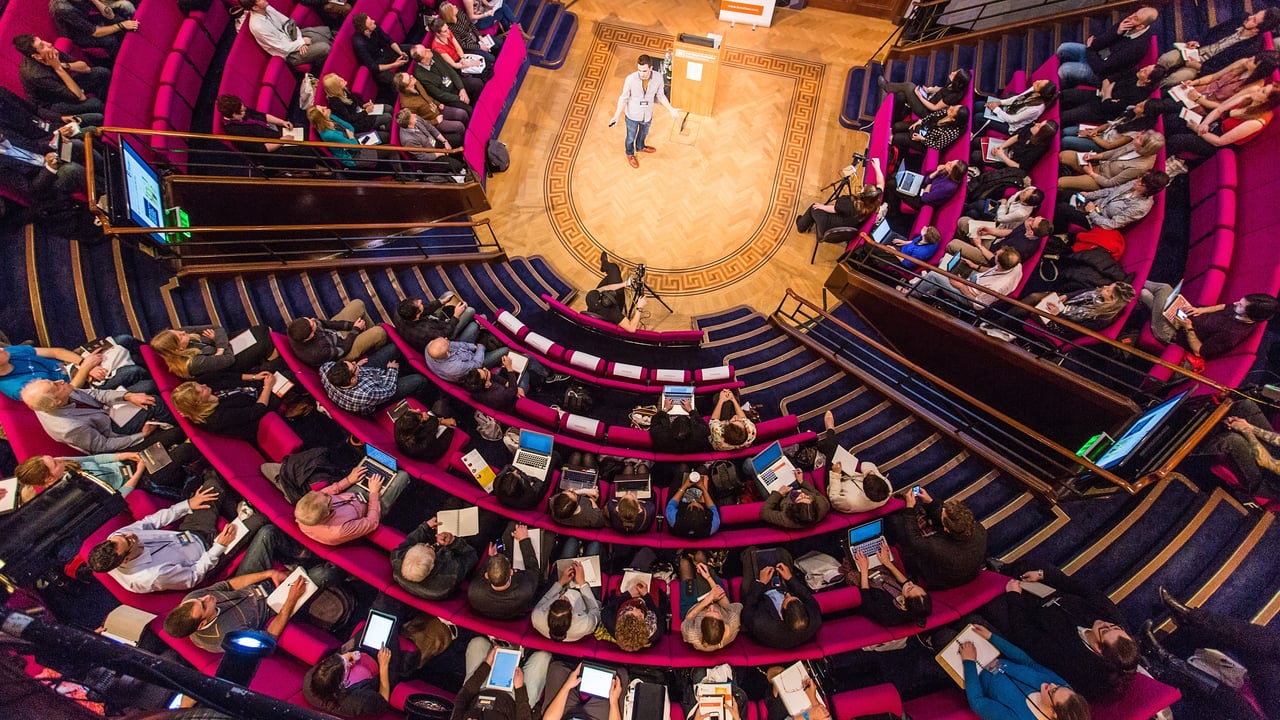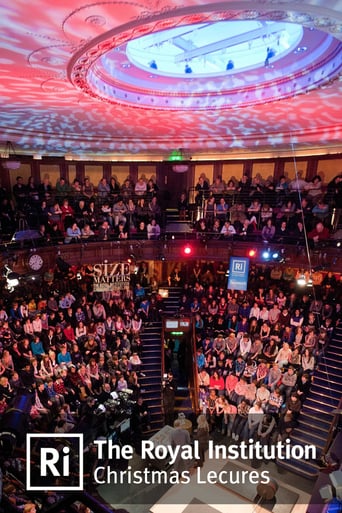Royal Institution Christmas Lectures Season 43

The Royal Institution Christmas Lectures are a series of lectures on a single topic, which have been held at the Royal Institution in London each year since 1825. The lectures present scientific subjects to a general audience, including young people, in an informative and entertaining manner. Michael Faraday initiated the first Christmas Lecture series in 1825. This came at a time when organised education for young people was scarce. Faraday presented a total of nineteen series in all.
Watch NowWith 30 Day Free Trial!
Royal Institution Christmas Lectures
1966
The Royal Institution Christmas Lectures are a series of lectures on a single topic, which have been held at the Royal Institution in London each year since 1825. The lectures present scientific subjects to a general audience, including young people, in an informative and entertaining manner. Michael Faraday initiated the first Christmas Lecture series in 1825. This came at a time when organised education for young people was scarce. Faraday presented a total of nineteen series in all.
Watch Trailer
With 30 Day Free Trial!
Royal Institution Christmas Lectures Season 43 Full Episode Guide
Computers are extraordinary machines, able to perform feats of arithmetic that far exceed the capabilities of any human. They can store a huge quantity of data and recall it perfectly in the blink of an eye. They can even beat the chess world champion at his own game. So why do computers struggle to solve apparently simple tasks such as understanding speech, or translating text between languages? Why is a three-year-old child better at recognising everyday objects than the world’s most powerful supercomputer? In the last of this year’s lectures, Chris Bishop looks at one of the great frontiers of computer science. He explains how some of the toughest computational problems are now being tackled by giving computers the ability to learn solutions for themselves. This has led to impressive progress with problems such as recognising handwriting and finding information on the web. Scientists are particularly concerned with the area of computer vision – the technology of making computers see what is placed in front of them. If perfected, this ability could be applied to all manner of practical uses, from medical scanners to cars that run on autopilot. However, exactly what constitutes intelligence remains an area of much philosophical debate. It can include skills such as logic, linguistic ability, spatial awareness, musical talent and inter personal skills. For many scientists, it remains to be seen how many of these abilities – if any – can be successfully developed in computers, and whether digital intelligence is even comparable to its human equivalent. There are many challenges ahead in the quest to build the ultimate computer.
The impact of computers increased dramatically when they were connected together to form the internet. Millions of users around the world log on to the web every day, forming part of a network that has revolutionised how people communicate, live, work and shop – yet few people could actually explain the inner workings of the system. Just how does information make its way across the web, through hundreds of computers to the right destination? How does a search engine find the desired page amongst billions of possibilities in a fraction of a second? What will the web be like in years to come? And are credit card numbers safe when they are sent out into the ether? In this lecture, Chris Bishop untangles some of the mysteries of the web. He reveals one of the most surprising results in computer science, and shows how it is used to make web pages secure. He also studies the different ways of scrambling information to stop eavesdroppers from reading it, and explains how quantum physics can provide a secret means of transmitting data over the internet. The future of the web remains a hotly debated topic. Experts predict a range of innovations, including an increase in the number of mobile devices that can access the web. Yet questions of web security, privacy, government regulation and the impact on social interactions as people spend more time online remain areas of great speculation. It is clear that the internet will be a major part of the future – but that future is still to be shaped.
Computers are the most versatile machines ever invented, and the same piece of hardware can be used for thousands of different purposes. They can create virtual worlds with extraordinary realism, play chess better than almost any human, and even isolate a person’s position to within a few metres anywhere on the planet. What makes this possible is something that cannot be seen, felt or touched, but without it the digital revolution would never have happened. Professor Bishop investigates the software that brings a machine to life, and turns it into a phone, a music player, a game, or any number of other devices – including ones not even imagined by the creator of the hardware. So what is software, and how is it stored inside the computer? Is data the same thing as information? Why are some problems just too hard for any computer to solve, and how can this be used to a scientist’s advantage? To answer these questions, Professor Bishop explores how software has touched almost every aspect of life. He finds out how powerful new computers running sophisticated programs are able to do thousands of tasks at once, and why the simultaneous calculations made by a quantum computer may outnumber atoms in the universe. Finally, with the help of a live satellite link, the studio audience will put their burning questions about software to one of the pioneers of computing – co-founder of Microsoft and the world’s third richest man, Bill Gates.
Computers now outnumber people throughout the world. But less than one per cent of these machines take the form of desktop or laptop computers. As microchips get smaller and faster, they are being built into a huge range of objects and devices, including such everyday items as washing machines, toys and even clothing. People interact with dozens if not hundreds of computers on a daily basis, often without even realising it. But very few of these have mice and keyboards. As computers become more widespread, new ways of communicating with them are needed. In this lecture, Professor Bishop reveals state-of the-art advancements in computer interaction, including new touch-screen technology. Surface computing allows people to manipulate documents just as they would pieces of paper on a table. Users are able to perform a host of functions, including organising and resizing photos, poring over maps and making selections from takeaway menus. The interface is capable of processing the requests of multiple users. Professor Bishop also demonstrates 3-D displays and flexible screens that can be rolled up when they are not being used. However, it is not just displays that are being revolutionised. As the number of computers grows, their power will be further exploited via networking – both with each other and the internet. In the future, the traditional shopping list looks set to become a thing of the past as microchips may be included in the packaging of consumables. When a pint of milk expires or pantry supplies are running low, a shopper will receive a text message or email informing them that they need to top up on certain items.
This year’s lectures are conducted by Professor Chris Bishop, chief research scientist with Microsoft Research and Professor of Computer Science at Edinburgh University. After graduating with first class honours in Physics from Oxford, Professor Bishop went on to earn a PhD in theoretical physics from Edinburgh University. His research interests include probabilistic approaches to machine learning, as well as their application to fields such as computer vision. Professor Bishop goes on a fascinating exploration of the extraordinary world of the silicon chip and attempts to answer the plethora of questions associated with this technology. How is it possible to build a machine as complex as this with a billion tiny components packed into a space the size of a postage stamp? What are the challenges that are making it harder to continue the incredible improvement in speed, and what ideas are being explored to overcome them? Can new kinds of computers be built that are based on individual molecules? Can single electrons be used to store information? Could computation machines exist without consuming energy? As scientists race to make computers faster and cheaper than ever before, Professor Bishop also asks whether scientists will eventually hit a wall. After decades of continuing enhancements and ever-increasing processing speeds, is there anything of significance that is yet to be achieved in the world of computing?
Free Trial Channels
Seasons


























